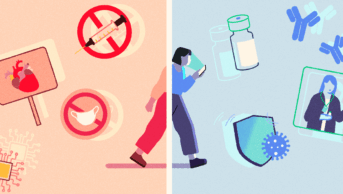As one of several patient representatives in an ongoing medication safety research project, my lay colleagues and I have now observed dozens of interactions between healthcare professionals and patients.
When you see best practice — particularly effective collaboration between healthcare professional and patient — it stands out a mile. And there is a lot of it around, despite the temptation to always focus on the things that are going wrong.
What do I mean by best practice — what do I refer to as ‘collaborative care’?
For me it means treating the patient (and their associated carer or family) as an adult and equal partner in deciding on the optimum health interventions. This requires having open and honest conversations with the patient and their carer or family, managing their expectations from the outset to avoid nasty surprises and devoting the time and effort to listen to the patient concerns and to their point of view. And I mean really listening. It is the most crucial element of great communication.
I have seen collaborative care defined as follows: “Exceptional health care in which patients, family members and other care team members are able to consistently co-create care that is meaningful, high quality, efficient, safe, reliable, resilient and responsive to the hopes, needs, goals and purposes of everyone involved.” (Field Guide to Collaborative Care — Uhlig and Raboin 2015)
It sounds pretty challenging doesn’t it? To achieve this takes time, effort and, almost certainly, some level of advanced communication or even customer engagement training. Not to mention potentially challenging a number of long-held NHS practices and processes, for example, restrictive visiting hours or the current lack of family/carer engagement in the hospital discharge process.
Early last year I observed a pharmacist working on the gastrointestinal ward at Hammersmith Hospital, London. These are my notes from that observation:
The pharmacist is discussing medication with a gentlemen aged about 40 and his partner.
The man has been suffering serious gastrointestinal problems for several years. He has been taking a new drug that he says has resulted in his feeling the best he has felt for many years.
His partner concurs. Both the patient and his partner seem relieved.
The pharmacist — while also clearly pleased — then explains, clearly and concisely, that the drug in question cannot be taken long-term because it has serious side-effects. The patient is left in no doubt that this is not negotiable.
The patient (and his partner) are initially disappointed.
The man wants to continue taking the drug.
The pharmacist gently but emphatically explains again that this is not an option.
The pharmacist then discusses with the man and his partner the options. She skillfully moves the discussion onto what can be done.
This is an interactive and ‘grown-up’ conversation with the pharmacist, the man and his partner putting forward and discussing various options and their implications.
The end result is the man suggests a gentle reduction in his medication over a two week period during which they collectively monitor the impact on his condition.
In parallel they will consider alternative medications as required.
Clearly the man is happy with this outcome (as is the pharmacist). It’s evident that the man and his partner feel they have driven and ‘owned’ the decision on the best way forward.
This observation begs two important questions that I am not able to answer:
- Were the patient’s expectations properly managed when the drug was initially prescribed?
- Was there a successful outcome for this patient?
But, nevertheless, I was immediately struck by the open and honest conversation that took place, by the collective decision making process and by the ‘mature’ level of overall engagement.
Crucially, there was an evident collaborative working relationship that developed and a level of trust engendered that would be invaluable in future treatment.
Observing best practice is one of the real joys of being a lay observer.
You may also be interested in

Calling the shots: the pharmacists combatting vaccine misinformation

Embedding quality improvement in pharmacy practice: a departmental strategy at University Hospitals of Derby and Burton
